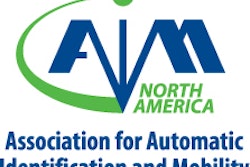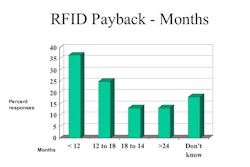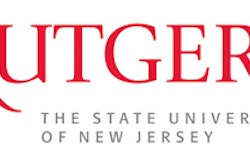
We take another "read" of the EPC Connection conference beyond our previous coverage that included Pacific Produce Canners, Eastpack kiwi fruit, and HIDE-Pack applications (see link at end). What follows is a smattering of additional notes and quotes from the fall event.
Some 80 Joint Action Groups (JAGs) and related groups were discussed by EPC Global president Chris Adcock, who noted that there are about 80 industry-focused groups within EPC. If you have an interest in these, check www.epcglobalinc.org to see if one exists for your industry or check into creating one. Adcock also announced that there is no impending legislation to negatively impact RFID standards, news that was a relief to all.
Mojix Inc. (www.mojix.com) founder and CEO Ramin Sadr gave a live demo of the company's STAR (Space Time Array Reader) technology, —a passive, real-time location system (RTLS) that can provide a "perpetual inventory" over a wide area such as a warehouse using Mojix's tripod-mounted interrogators. Sadr called the technology "an RF floodlight" that could detect even weak RF signals. STAR promises read rates to 700 tags/sec and read reliability exceeding 99.9% at the pallet, carton, or item level. It drew interest at the presentation and at the company's booth, one of a scant few exhibitors—the diminished attendance at this fall 2008 event versus previous years was where I first truly realized the impact of the fading economy.
CPG rivals align on RFID
Three managers of major consumer packaged goods manufacturers, The Coca Cola Company, Kraft, and Procter & Gamble, joined together in a session entitled, "How EPC creates opportunities for new ways of working together."
One of the tools referenced during the session was a process flowchart that divides products across three tracks: EPC Advantages, Testable, or Challenged as a starting point to work from (shown).
Coca-Cola's Ann Dozier acknowledged her company's heady challenge of using RFID to track products containing both liquid and metal. Dozier, vp of collaborative customer capabilities North America retail sales, said her company's efforts in using the Electronic Product Code (EPC) goes back seven years. Part of the company's EPC efforts has related to direct store delivery to enable the company to "see where the products are."
Dozier also noted that the company, which operates two RFID-enabled facilities in Texas, had gone so far as to paint floors using reflective paint to improve RFID read rates.
Similarly, P&G's Milan Turk compared RFID to a light shining into the darkness across its vast array of items where each product presents a different set of circumstances from package design to format—pallet, cases, individual packages—and how it flows from P&G to the retailer. "Each product presents a different business profile in how to use EPC," he said. "We can use EPC has a sampling technique to uncover areas of loss especially for promotional efforts. Patterns emerge even when tagging one pallet per truckload."
P&G changed the packaging for its Gillette Fusion razor partly as a way to improve RFID performance, including employing "nonmetallic means" to maintain a flashy, metallic-like look to the packages.
As we have heard elsewhere, promotional efforts have been a prime area for RFID success. Kraft's Mark Pollock, director, global EPC/RFID initiatives, agreed: "The opportunity for us in promotions is because of the high-dollar value and the ability to track the display throughout the store to see if it's in the right place at the right time."
Said Dozier, "We absolutely believe in the opportunity of EPC in our supply chain in the future. We can ultimately believe that if we can get a tag at the item level, it could transform our supply chain and offer a lot of business opportunities for us and our retail partners in the future."
To get there, added Dozier, they have to hurdle two challenges—one for technology issues, and one for economics. She feels if Coke can solve the technical issues, they can figure out the economics.
When I spoke afterwards with Dozier, she said that the RFID read performance the Coca-Cola Co. has seen has been the same whether the containers were made of metal or PET.
The company's issues with liquid-containing metal cans or other containers are not unique; she pointed to a grocery chain's recent study that indicated that 43% of all the products it carried contained either metal or liquid.
Walmart not backing off RFID
Walmart's vp of information systems, Carolyn Walton, said, "We have not backed off at all," in responding about the status of the retailer's RFID deployment. "We had to show that the technology works, and we know it works, and now we can move on to talk about benefits and applications." She noted that about one-third of Walmart's 4,100 U.S. stores are EPC-enabled and that 500 of 600 Sam's Clubs are EPC/RFID-enabled (Sam's has since reported that EPC readers have been installed at the receiving doors of all of its U.S. stores). A 23-week case-study test of air freshener sales at eight stores with RFID and eight without found that RFID gave a double-digit lift in sales, Walton said. Next segments for RFID tagging at Walmart include home furnishings and electronics. She also believes that sensor-enabled tags with broader capability are ahead, such as those that change color under certain conditions.
For prior stories from EPC Connection 2008, click here. http://www.packworld.com/webonly-27021.
























